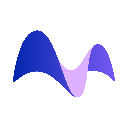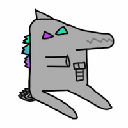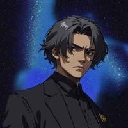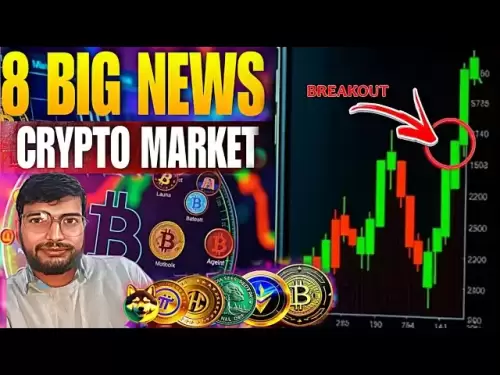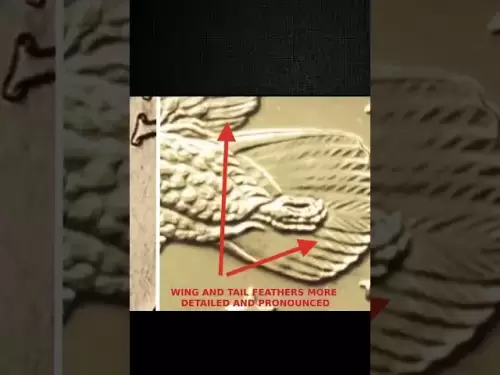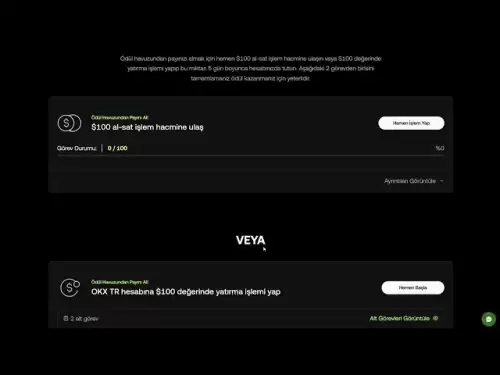-
 Bitcoin
Bitcoin $119300
1.07% -
 Ethereum
Ethereum $3730
3.87% -
 XRP
XRP $3.235
0.29% -
 Tether USDt
Tether USDt $1.000
0.00% -
 BNB
BNB $783.5
1.88% -
 Solana
Solana $188.7
0.25% -
 USDC
USDC $0.0000
-0.01% -
 Dogecoin
Dogecoin $0.2399
-0.44% -
 TRON
TRON $0.3157
2.37% -
 Cardano
Cardano $0.8254
1.94% -
 Hyperliquid
Hyperliquid $42.83
0.14% -
 Stellar
Stellar $0.4372
3.21% -
 Sui
Sui $3.859
4.91% -
 Chainlink
Chainlink $18.53
3.53% -
 Hedera
Hedera $0.2464
0.01% -
 Bitcoin Cash
Bitcoin Cash $519.8
2.46% -
 Avalanche
Avalanche $24.24
2.17% -
 Litecoin
Litecoin $113.7
0.73% -
 UNUS SED LEO
UNUS SED LEO $8.990
0.30% -
 Shiba Inu
Shiba Inu $0.00001390
0.21% -
 Toncoin
Toncoin $3.188
1.49% -
 Ethena USDe
Ethena USDe $1.001
0.02% -
 Polkadot
Polkadot $4.090
-0.91% -
 Uniswap
Uniswap $10.40
4.08% -
 Monero
Monero $326.6
3.12% -
 Bitget Token
Bitget Token $4.627
-0.42% -
 Pepe
Pepe $0.00001281
0.76% -
 Dai
Dai $1.000
0.01% -
 Aave
Aave $291.6
0.98% -
 Cronos
Cronos $0.1269
7.26%
How to interpret the sudden change in Ethereum's DEX/CEX trading volume ratio?
Sudden shifts in Ethereum's DEX/CEX ratio can signal changes in market sentiment, regulatory impacts, or tech advancements, guiding traders' strategies.
Apr 22, 2025 at 08:28 pm

The sudden change in Ethereum's DEX/CEX trading volume ratio can provide valuable insights into the current trends and behaviors within the cryptocurrency market. DEX, or decentralized exchanges, and CEX, or centralized exchanges, represent two different approaches to trading cryptocurrencies. Understanding the factors that influence this ratio can help traders and investors make more informed decisions. This article will delve into the reasons behind sudden changes in this ratio, the implications of such shifts, and how to interpret them effectively.
What is the DEX/CEX Trading Volume Ratio?
The DEX/CEX trading volume ratio is a metric that compares the trading volume on decentralized exchanges to that on centralized exchanges for a specific cryptocurrency, in this case, Ethereum. This ratio is calculated by dividing the total trading volume on DEXs by the total trading volume on CEXs over a specific period. A higher ratio indicates a greater preference for decentralized trading, while a lower ratio suggests a preference for centralized trading.
Factors Influencing the DEX/CEX Ratio
Several factors can influence the DEX/CEX trading volume ratio for Ethereum. One key factor is market sentiment. If there is a growing concern about the security and privacy of centralized exchanges, traders may shift their activities to DEXs, leading to an increase in the ratio. Conversely, if CEXs are perceived as more user-friendly and reliable, the ratio may decrease.
Another important factor is regulatory changes. If new regulations are introduced that favor decentralized exchanges, or if there are crackdowns on centralized exchanges, this can significantly impact the ratio. For instance, if a major CEX faces regulatory scrutiny, traders might move their funds to DEXs, causing a spike in the ratio.
Technological advancements also play a role. Improvements in DEX technology, such as faster transaction times and lower fees, can attract more users and increase the ratio. On the other hand, if CEXs introduce new features that enhance user experience, the ratio might decrease.
Interpreting Sudden Increases in the DEX/CEX Ratio
A sudden increase in the DEX/CEX ratio can indicate several things. One possibility is a shift in user preference towards decentralized trading due to concerns about the security and privacy of centralized exchanges. This could be triggered by a major security breach on a CEX, prompting users to seek safer alternatives.
Another reason could be regulatory news that favors DEXs. If regulators announce plans to impose stricter regulations on CEXs, traders might preemptively move their trading activities to DEXs, leading to a spike in the ratio.
Additionally, technological improvements in DEXs could be a contributing factor. If a popular DEX introduces a significant upgrade that improves its performance, this could attract more users and increase the ratio.
Interpreting Sudden Decreases in the DEX/CEX Ratio
Conversely, a sudden decrease in the DEX/CEX ratio might suggest a shift in user preference towards centralized trading. This could be due to CEXs offering better user experiences, such as more intuitive interfaces, faster transaction processing, and better customer support.
Regulatory changes that favor CEXs could also lead to a decrease in the ratio. If regulators provide clearer guidelines or more favorable conditions for CEXs, traders might feel more confident using them, resulting in a shift away from DEXs.
Furthermore, technological setbacks in DEXs could contribute to a decrease in the ratio. If a popular DEX experiences technical issues or downtime, users might move to CEXs temporarily, causing the ratio to drop.
How to Monitor and Analyze the DEX/CEX Ratio
To effectively monitor and analyze the DEX/CEX ratio, traders can follow these steps:
- Choose a Reliable Data Source: Use reputable cryptocurrency data providers that offer accurate and up-to-date information on trading volumes across both DEXs and CEXs.
- Set Up Alerts: Configure alerts for significant changes in the ratio. This can help you stay informed about sudden shifts and take timely action.
- Analyze Historical Data: Look at historical trends in the DEX/CEX ratio to understand how it has evolved over time and identify patterns that may help predict future movements.
- Stay Informed on Market News: Keep up with news and developments in the cryptocurrency space, as these can have a direct impact on the ratio. Pay attention to security breaches, regulatory changes, and technological advancements.
- Use Analytical Tools: Utilize analytical tools and platforms that can help you visualize and interpret the DEX/CEX ratio more effectively. These tools can provide insights into the factors driving changes in the ratio.
Implications of Changes in the DEX/CEX Ratio
Changes in the DEX/CEX ratio can have several implications for the cryptocurrency market. A rising ratio might suggest a growing interest in decentralized finance (DeFi) and a shift towards more privacy-focused trading. This could lead to increased adoption of DEXs and potentially drive the development of new decentralized technologies.
On the other hand, a falling ratio might indicate a preference for the established infrastructure and user experience of centralized exchanges. This could result in CEXs continuing to dominate the market and attract more institutional investors who value reliability and regulatory compliance.
Case Studies of Sudden Changes in the DEX/CEX Ratio
To better understand how sudden changes in the DEX/CEX ratio can be interpreted, let's look at a few case studies:
- Case Study 1: Security Breach on a Major CEX: In early 2022, a major centralized exchange suffered a significant security breach, leading to a sudden increase in the DEX/CEX ratio. Traders moved their funds to DEXs out of fear of similar incidents, causing a spike in decentralized trading volumes.
- Case Study 2: Regulatory Crackdown on CEXs: In late 2021, regulators in a major market announced plans to impose stricter regulations on centralized exchanges. This led to a temporary increase in the DEX/CEX ratio as traders shifted to decentralized platforms to avoid potential regulatory hurdles.
- Case Study 3: Technological Upgrade on a Popular DEX: In mid-2022, a leading DEX introduced a significant technological upgrade that reduced transaction fees and improved transaction speeds. This resulted in a noticeable increase in the DEX/CEX ratio as more users were attracted to the platform.
Frequently Asked Questions
Q: Can changes in the DEX/CEX ratio be used to predict market trends?
A: While changes in the DEX/CEX ratio can provide insights into current market sentiment and trends, they should not be used as the sole basis for predicting future market movements. Other factors, such as overall market conditions, macroeconomic indicators, and specific cryptocurrency news, should also be considered.
Q: How often should I check the DEX/CEX ratio?
A: The frequency of checking the DEX/CEX ratio depends on your trading strategy and risk tolerance. For active traders, monitoring the ratio daily or even hourly might be beneficial. For long-term investors, weekly or monthly checks could be sufficient.
Q: Are there any tools specifically designed to track the DEX/CEX ratio?
A: Yes, several cryptocurrency analytics platforms offer tools specifically designed to track and analyze the DEX/CEX ratio. Examples include CoinGecko, CoinMarketCap, and specialized DeFi analytics platforms like DeFi Pulse and Dune Analytics.
Q: How does the DEX/CEX ratio impact liquidity in the Ethereum market?
A: The DEX/CEX ratio can influence liquidity in the Ethereum market. A higher ratio might lead to increased liquidity on DEXs, making it easier to execute large trades without significantly impacting prices. Conversely, a lower ratio could result in higher liquidity on CEXs, which might attract more institutional investors looking for deep liquidity pools.
Disclaimer:info@kdj.com
The information provided is not trading advice. kdj.com does not assume any responsibility for any investments made based on the information provided in this article. Cryptocurrencies are highly volatile and it is highly recommended that you invest with caution after thorough research!
If you believe that the content used on this website infringes your copyright, please contact us immediately (info@kdj.com) and we will delete it promptly.
- Bitcoin, Jim Cramer, and the US Deficit: A Wall Street Story
- 2025-07-25 10:30:11
- TGEs, Scalability & Privacy Tech: Decoding the Future of Blockchain
- 2025-07-25 10:30:11
- TRON, Crypto Payroll, and Stablecoins: A New York Minute on the Future of Finance
- 2025-07-25 08:30:11
- WazirX, Revote, and Crypto Unlock: A New York Minute on the Latest Developments
- 2025-07-25 06:50:11
- Hong Kong Stablecoin Regulation: Navigating the Hype and Hurdles
- 2025-07-25 08:30:11
- Bitcoin LTHs, CDD Ratio, and Distribution: What's the Deal?
- 2025-07-25 08:50:12
Related knowledge

How to avoid common crypto investment mistakes?
Jul 13,2025 at 01:35am
Understanding the Risks of Crypto InvestmentInvesting in cryptocurrency can be highly rewarding, but it also comes with significant risks. One of the ...

What is a long-short crypto strategy?
Jul 15,2025 at 10:56am
Understanding the Basics of a Long-Short Crypto StrategyA long-short crypto strategy is an investment approach where traders simultaneously take long ...

What is a long-short crypto strategy?
Jul 11,2025 at 01:28pm
Understanding the Basics of Long-Short Crypto StrategyA long-short crypto strategy is an investment approach where traders take both long and short po...

How to use the RSI indicator for crypto?
Jul 12,2025 at 03:56pm
Understanding the RSI Indicator in Cryptocurrency TradingThe Relative Strength Index (RSI) is a momentum oscillator used to measure the speed and chan...

Is copy trading a good strategy for crypto beginners?
Jul 12,2025 at 08:28am
Understanding Copy Trading in the Cryptocurrency MarketCopy trading is a strategy where novice traders replicate the trades of experienced investors a...

How to build a crypto portfolio with $1000?
Jul 13,2025 at 08:14pm
Understanding the Basics of Cryptocurrency InvestmentBuilding a crypto portfolio with $1000 starts with understanding the fundamentals of cryptocurren...

How to avoid common crypto investment mistakes?
Jul 13,2025 at 01:35am
Understanding the Risks of Crypto InvestmentInvesting in cryptocurrency can be highly rewarding, but it also comes with significant risks. One of the ...

What is a long-short crypto strategy?
Jul 15,2025 at 10:56am
Understanding the Basics of a Long-Short Crypto StrategyA long-short crypto strategy is an investment approach where traders simultaneously take long ...

What is a long-short crypto strategy?
Jul 11,2025 at 01:28pm
Understanding the Basics of Long-Short Crypto StrategyA long-short crypto strategy is an investment approach where traders take both long and short po...

How to use the RSI indicator for crypto?
Jul 12,2025 at 03:56pm
Understanding the RSI Indicator in Cryptocurrency TradingThe Relative Strength Index (RSI) is a momentum oscillator used to measure the speed and chan...

Is copy trading a good strategy for crypto beginners?
Jul 12,2025 at 08:28am
Understanding Copy Trading in the Cryptocurrency MarketCopy trading is a strategy where novice traders replicate the trades of experienced investors a...

How to build a crypto portfolio with $1000?
Jul 13,2025 at 08:14pm
Understanding the Basics of Cryptocurrency InvestmentBuilding a crypto portfolio with $1000 starts with understanding the fundamentals of cryptocurren...
See all articles

















